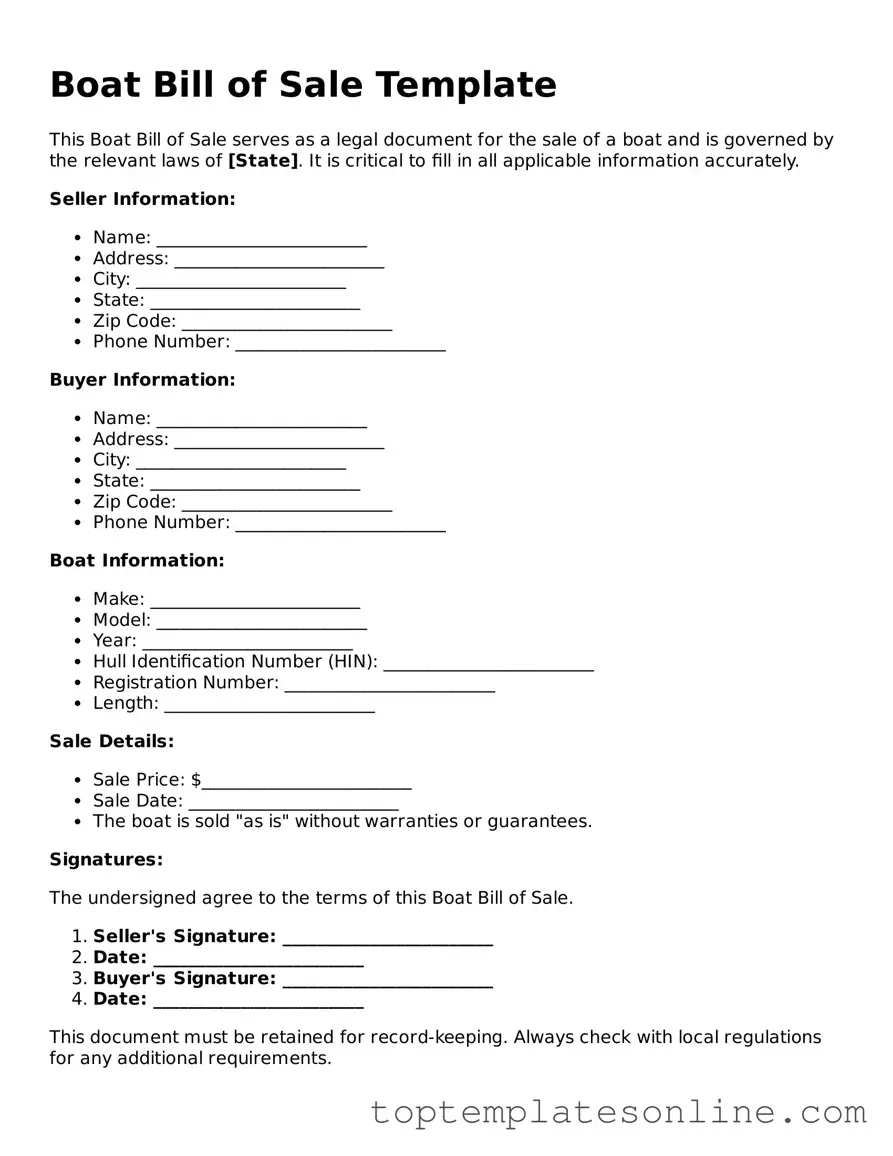Attorney-Approved Boat Bill of Sale Form
The Boat Bill of Sale form is a legal document that serves as proof of the transfer of ownership of a boat from one party to another. This form outlines essential details such as the buyer and seller's information, the boat's specifications, and the sale price. Having a properly completed Boat Bill of Sale can protect both parties and facilitate a smooth transaction.
Customize Boat Bill of Sale Here
